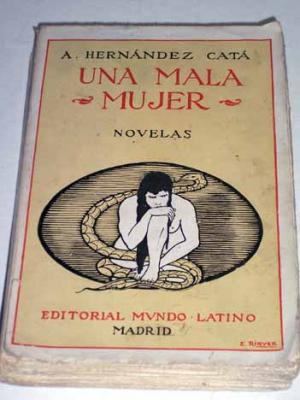4.2.7.3 The novel production of Alfonso Hernández Catá (1885 – 1940)

Alfonso Hernández Catá, despite his diplomatic work keeping him away from the island for a long time and generally prioritizing the study of internal conflicts over those of a social nature, nevertheless displays concerns about the country’s political and social situation in his novels, as well as in some of his short stories.
Many of his works are short novels, sometimes considered short stories. In 1909, he published “Pelayo González” and “Novela erótica” (Erotic Novel). In 1915, he published “Los frutos ácido (Acid Fruits),” a work comprised of a series of short novels, including “Los muertos” (The Dead), one of the author’s most aesthetically accomplished texts, expressing connotations typical of modernism.
In “The Dead,” the events take place in a leper hospital, where patients were physically and spiritually isolated from society, though not immune to the passage of time outside. The text proposes a reflection on the liberating nature of the disease, as society itself is suffering from a worse illness. Furthermore, it takes the side of those who have been neglected through the mechanisms of social exclusion, dispossessed and obliterated by their loved ones.
Already in 1913 he had published “The Skin”, in which the action appears concentrated, devoid of rhetoric, located in the imaginary country of Tahiti but with atopic pretensions in terms of the desire to universalize the issue of racial discrimination as a burden that humanity still continued to carry, gripped by a political system that fostered inequality at all levels.
Dating from 1922 is what literary critics have considered his finest novel, “The New Death,” in which he attempts to unravel the intricate web of human passions in which his protagonist, Ramiro, finds himself entangled. The female portraits possess some successes, although women are relegated to amorous objects, in accordance with centuries-old canons that Hernández Catá was unable to completely transgress in expressing his worldview.
In 1928, he conceived “The Angel of Sodom,” which revolves around the theme of male homosexuality, unusual in those years except for Carlos Montenegro’s play, “Men Without Women,” published 10 years later. Hernández Catá’s work demonstrates the use of a careful narrative method that left little room for improvisation, based on an authentic approach that avoids hackneyed social conventions.
In general, his entire novelistic work focuses on individual conflicts, sometimes gruesome, in which the social environment rarely becomes a background, so that there are no features of natural or social autochthony, but rather a desire for psychological penetration that would even provide his pieces with a certain appeal in the field of this discipline, of which proof is the fact that the Spanish psychiatrist Antonio Vallejo Nájera dedicated a chapter to the study of his production, in “Literature and Psychiatry”, from 1950.








